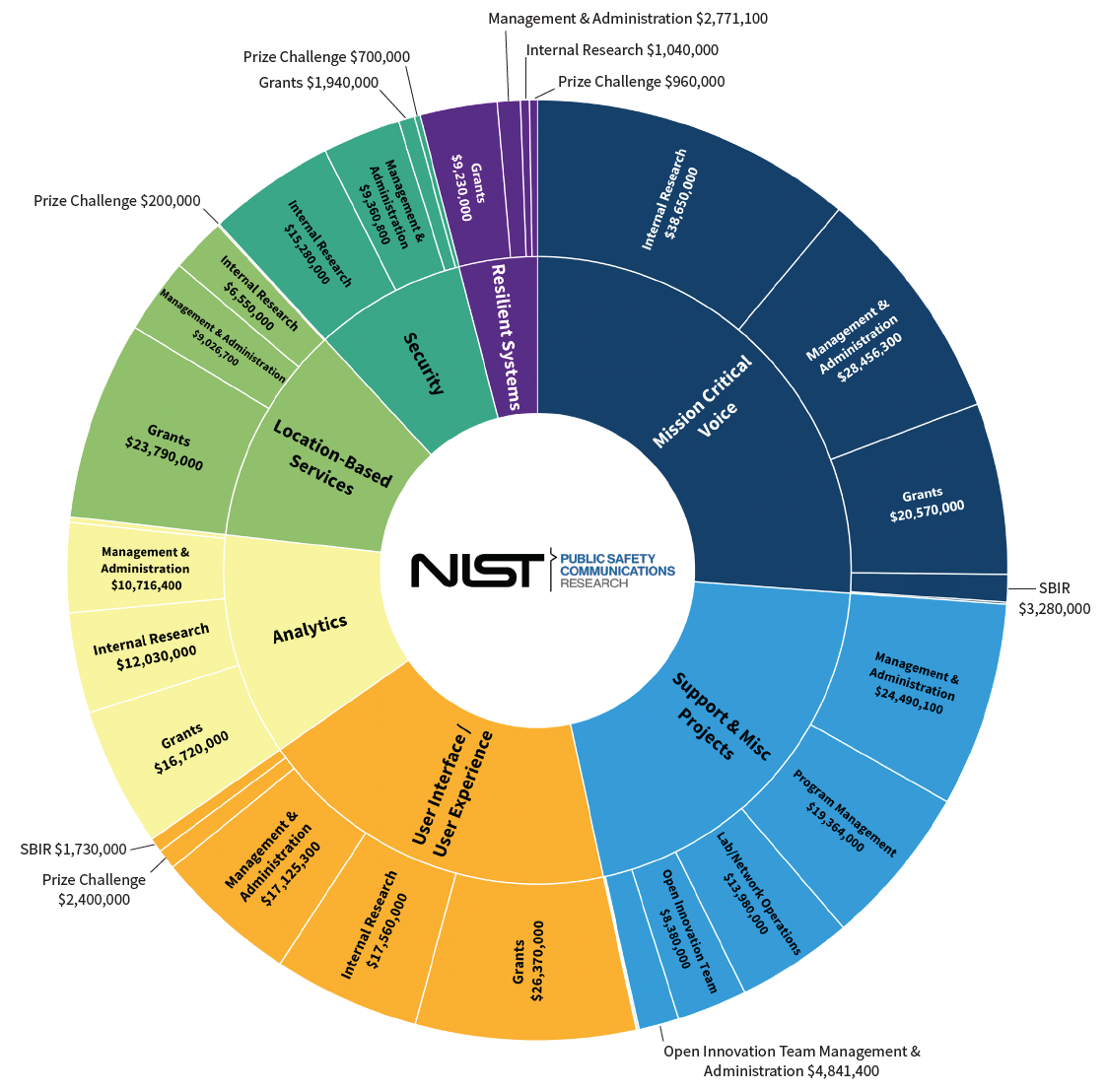Public Safety Innovation Impacts
The Middle-Class Tax Relief and Job Creation Act marked an unparalleled push toward next-generation technologies for public safety by allocating $300 million to accelerate cutting-edge communications research. NIST's Public Safety Communications Research (PSCR) Division delivered public-private partnerships that drove research and development of critical, life-saving communications capabilities for first responders.
A 2023 Executive Summary provides key stakeholders with relevant information about how PSCR spent Public Safety Trust Funds and the impacts of that funding. Furthermore, this report seeks to demonstrate the value and positive outcomes of a one-time injection of funds into a topic area and the extent to which this model can be repeated in other areas of significant impact, like semiconductor supply or climate change. Read both the Executive Summary and the Full Report below.
NIST PSCR investment
With limited time and a federal team beginning with only 31 full time employees in 2016, PSCR sought partnerships to join their mission. While PSCR was allocated $300M, the following analysis is presented in 2022 dollars to effectively compare economic impact over time.
In 2022 dollars, PSCR invested $348.76M between internal research, external research, prize challenges, and commercialization. With the funds’ expiration, PSCR sought to better understand how their R&D investments resulted in economic impacts that rippled outward to state economies.
According to the Economic Impact Analysis, PSCR allocated $239.95M to internal research, generating an estimated 3,000 jobs in the U.S. economy.
Utilizing grants and cooperative agreements, PSCR supported a total of 83 funding opportunities, 77 of which were U.S.-based and 6 of which were international. PSCR invested $108.76M total in external awardees, with $98.62M spent domestically and $10.14M spent internationally. An estimated 2,782 jobs were added to the economy as a result of PSCR’s support of domestic external research. However, the impact of international awards was not assessed in the economic report.
Employing prize challenges, PSCR invested $5.19M, supporting the award of 184 teams and adding an estimated 233 jobs to the U.S. economy. As with grants, while 5 international teams participated, their contributions to the economy were not formally assessed.
Finally, PSCR also supported two SBIR Phase 3 awards at a total investment cost of $5.01M, leading to an estimated 51 part time and/or full time jobs.

Research area highlights
User Interface/User Experience
|
|
|
|
|
|
Additional resources
Explore the other supporting documentation of PSCR’s impacts and how their R&D program has supported the deployment of public safety technology while simultaneously positively impacting the United States economy.
- PSCR's strategic accomplishments
- Digital Brochure
- Digital Dispatch
- 2021 Economic Impact Report
- Public Safety Communications Research Division Impact Report: Fiscal Years 2017 – 2019
Stay up-to-date with PSCR by subscribing to our mailing list.
Contacts
-
(303) 497-5400

